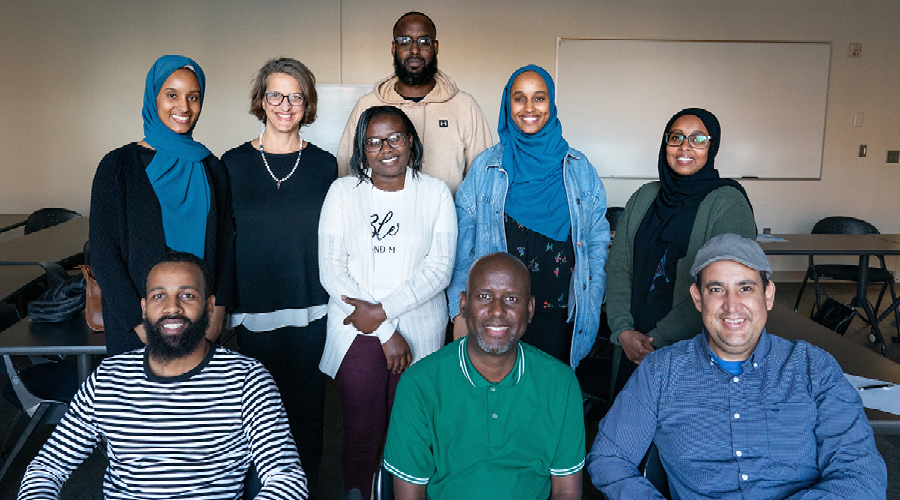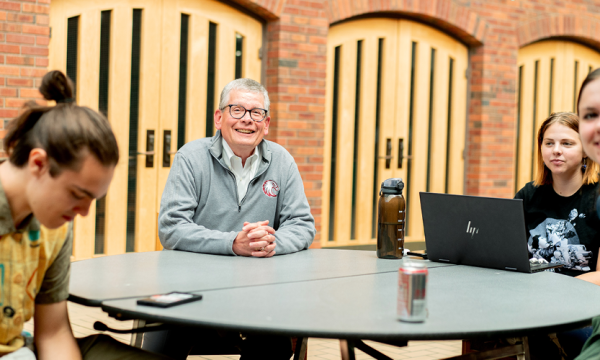The East African Students to Teachers (EAST) Program started in the early 2000s when community leaders saw a need for their children to be taught by teachers who could relate to them. Through their work with Augsburg University and the help of former state Rep. Jim Davnie, D-Minneapolis, the Minnesota legislature funded an appropriation to provide full scholarships to people of East African descent who wanted to become teachers. For more than 10 years, Audrey Lensmire, director of the EAST Program and professor of education, worked closely with East African students to build a robust, effective training program for underrepresented teachers. In 2023, EAST became Thrive, expanding the services to all BIPOC students in the education department.
Learn more about Thrive and its work with Program Coordinator Abdikarim Abdi and Assistant Professor of Education Sergio Madrid-Aranda.
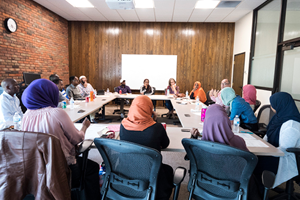
Tell us about Thrive.
Madrid-Aranda: Thrive is the expansion of EAST, which changed to serve more students. Dr. Lensmire’s work was so fundamental to what Thrive is now. Her time building the EAST Program is the basis of what Thrive is today, and we are growing from what she has put in place.
Abdi: Working from the EAST Program, we saw the positive influence that educators of color have in the classroom. We wanted to expand this for all BIPOC students in the education department. The first level of support is financially through scholarships. Secondly, it comes through mentorship and counseling services. Lastly, we provide resources for professional development. These all come together to create teachers who will eventually change the landscape of the K–12 education system throughout the state.
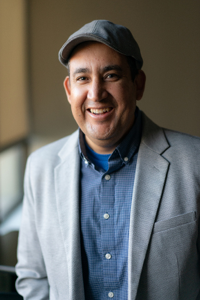
Why is representation important in the classroom?
Madrid-Aranda: Historically, the education field has been dominated by white women. That wasn’t a problem at first, but as [student] demographics started to change in the U.S., the demographics of teachers did not.
Speaking for myself and my own experience as a student, I didn’t see a teacher who looked like me until I went to grad school. Throughout my education, I never thought I could even go to grad school because I never saw anyone who looked like me there. Students, especially students of color, need to see themselves in the teachers and leaders around them. That’s why representation is important.
Abdi: Studies have shown that students may learn better when they can identify with their teacher. When I was a student, I was fortunate enough to have some teachers of color because I was in a more diverse school district. When I had a teacher of color, not only did I learn better but so did my peers. Unfortunately, I experienced that later in my life, so I often wondered if I’d had a teacher of color when I was younger if my interest in school could have been different. As a student, it was important for me to see a teacher who could bring something else to the table other than the narrative of the dominant culture.
How does the lack of diverse representation among teachers impact K–12 learning experiences, particularly for students of color?
Madrid-Aranda: The curriculum that teachers are following is already Euro-centric, and so students of color already do not see themselves in the curriculum. Research shows us that when there is a teacher of color, there is a higher chance that the curriculum will be adapted to reflect the lived experience of the students. Additionally, research tells us that teachers of color benefit the learning of both our students of color as well as our white students.
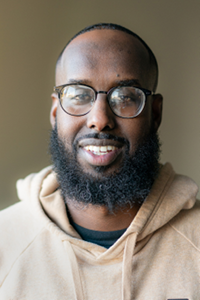
What challenges do you see for BIPOC individuals who aspire to become teachers?
Abdi: The biggest challenge has been having to student teach for 12 weeks, which is all unpaid and often becomes a financial burden. It becomes a make-or-break moment for all potential educators. A challenge specific to the students of color is when they are the only person, or one of few people, of color in a district or a school. This causes isolation to the teacher, not having others to relate to. Additionally, this person often becomes the “expert” or “spokesperson” for all persons of color. During the first three years when the teacher is just starting a career, adding these challenges—in addition to their regular responsibilities of building a curriculum, navigating the system, and trying to build relationships with students and parents—becomes overwhelming to many new educators of color.
Madrid-Aranda: I have been a teacher for a long time, and now I am a professor teaching teachers, so I have seen this through different lenses. There are systemic barriers that present more challenges for teachers of color than their white counterparts. Research has shown that for students who want to become teachers, it is harder for them to be admitted into college. College graduation rates are lower for students of color. When these students graduate and apply for jobs, it is harder for them to get their foot in the door and become teachers. There are implicit biases during the hiring process and the promotion process. Not everyone is consciously trying to be discriminatory, but there are implicit biases that exist so that teachers of color have fewer opportunities compared to their white counterparts. An applicant not being a “good fit” for the team or school often comes up.
Once they become teachers, they struggle to survive the first three years of teaching because new teachers need to be supported in the crucial first years, but often teachers of color are in a community that isn’t welcoming. They often are the only person of color in their school, which can make it harder to build relationships and partnerships.
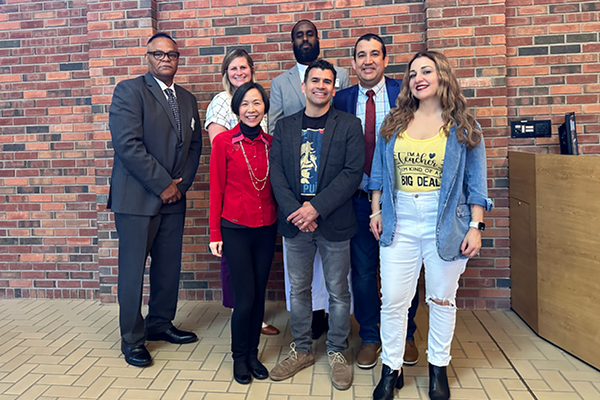
Let’s visit the first-three-years issue. What is Thrive doing to help prepare students for the first three years of teaching?
Abdi: One of the things we do in the Thrive Program is hold community-building gatherings for our students. The purpose of this is so they can build a network and support each other before they become full-time teachers. Another thing we do is bring in mentors—graduates from the EAST Program, other Augsburg BIPOC alumni, and teachers with whom we have connections. We’re aiming to build a strong network for teachers of color here at Augsburg to help fight that challenge of isolation and belonging.
Madrid-Aranda: Our main job has been recruitment and retention, but our big goal goes beyond graduation to ensure that they survive those first three years of teaching. Recently we connected with a national organization in Maryland that is building a network of teachers of color. We continue to work with our alumni. We want to be intentional in how we can continue to grow this mentorship opportunity to support our students.
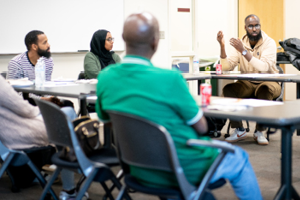
How does the Thrive Program align with Augsburg’s mission?
Madrid-Aranda: Intentional diversity. Augsburg’s focus and work with underrepresented communities to build diversity on campus is key. The drive to build leaders for our communities goes hand in hand with Thrive’s work to prepare our students to be leaders in the classroom.
Abdi: Beginning with EAST, it really shows Augsburg’s commitment to being a leader and member of the community. EAST could not have happened if the Cedar-Riverside community didn’t already feel that they could trust Augsburg. With that trust and with Augsburg’s intention of helping students of color succeed to become responsible leaders, you see how Thrive and Augsburg’s mission are interwoven together.
The Thrive Program provides scholarships to students through the Collaborative Urban and Greater Minnesota Educators of Color (CUGMEC) Grant. In 2023, Augsburg was awarded over $630,000 to fund Thrive and support students of color pursuing education-related degrees.
To learn more about Thrive, visit augsburg.edu/education/thrive.
Top image: The last EAST gathering in October 2022 before its expansion to Thrive (Photo by Courtney Perry)


